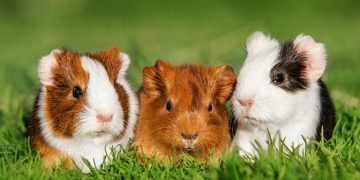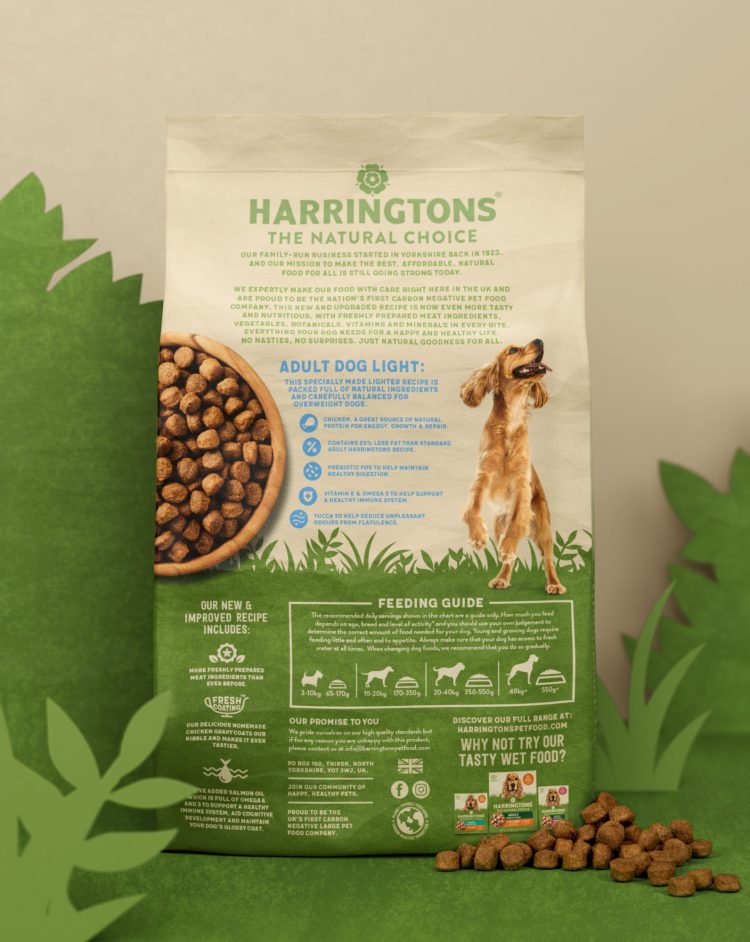Introduction:
As environmental concerns continue to grow, sustainability has become a major focus across various industries, including the pet care sector. Eco-friendly pet food, made with sustainable ingredients and eco-conscious practices, is gaining popularity among pet owners who want to make environmentally responsible choices. While the shift toward greener pet food options is a welcome change for many, it raises an important question: Do these sustainable ingredients affect pet health and palatability?
In this article, we will explore the rise of environmentally friendly pet food, the types of sustainable ingredients being used, and whether these ingredients impact the health of pets and their willingness to eat the food. We will also address some concerns about the effectiveness of these products and what pet owners should consider when choosing eco-friendly options for their pets.
1. What is Eco-Friendly Pet Food?
Eco-friendly pet food is made using ingredients and production methods that prioritize sustainability and minimize environmental impact. This can involve a variety of practices, such as:
- Sustainable sourcing of ingredients: Using plant-based proteins, ethically sourced meat, and responsibly harvested fish.
- Reduced carbon footprint: Reducing emissions in the manufacturing, transportation, and packaging processes.
- Recyclable or biodegradable packaging: Using packaging that is recyclable or made from renewable materials.
- Ethical farming practices: Supporting farming methods that prioritize animal welfare, biodiversity, and soil health.
The goal of eco-friendly pet food is not only to provide pets with high-quality nutrition but also to minimize the environmental footprint associated with pet food production.
2. Types of Sustainable Ingredients in Eco-Friendly Pet Food
The ingredients in eco-friendly pet food vary depending on the brand and the specific environmental goals they prioritize. Some of the most common sustainable ingredients found in these pet foods include:
a. Plant-Based Proteins
One of the key trends in eco-friendly pet food is the use of plant-based proteins, such as peas, lentils, chickpeas, and quinoa. These ingredients are often used in place of animal-based proteins like chicken, beef, or fish, as they require fewer natural resources to grow and have a lower environmental impact.
- Environmental Benefit: Plant-based proteins require less water, land, and energy compared to animal farming. Additionally, growing plant-based ingredients produces fewer greenhouse gas emissions.
- Health Consideration: While plant-based proteins can provide a good source of essential amino acids, some pets, particularly cats (obligate carnivores), may find it more difficult to digest and absorb certain plant proteins compared to animal proteins.
b. Sustainably Sourced Animal Proteins
Many eco-friendly pet foods still use animal proteins but ensure that these ingredients come from ethically sourced and sustainably raised animals. This can include free-range poultry, grass-fed beef, or sustainably caught fish from fisheries that follow responsible practices.
- Environmental Benefit: Sustainable animal farming practices prioritize animal welfare, lower environmental impact, and promote biodiversity.
- Health Consideration: High-quality, sustainably sourced animal proteins can provide pets with the nutrients they need in a form that is highly digestible, making them suitable for both carnivorous and omnivorous pets.
c. Insects and Alternative Protein Sources
Some eco-friendly pet foods are incorporating insect protein, such as crickets, mealworms, or black soldier fly larvae. Insects are rich in protein and require significantly fewer resources to farm compared to traditional livestock.
- Environmental Benefit: Insect farming produces less methane and requires less land and water, making it a very resource-efficient protein source.
- Health Consideration: Insect proteins are highly digestible and provide essential amino acids, omega fatty acids, and other nutrients. However, some pets may take time to adjust to the new protein source, and certain allergies could emerge.
d. Seaweed and Algae
Seaweed and algae are being used in eco-friendly pet foods as sources of omega-3 fatty acids, antioxidants, and fiber. These marine plants are highly sustainable as they do not require land for farming and can grow in environments where traditional crops cannot.
- Environmental Benefit: Seaweed farming absorbs CO2 and has a minimal environmental footprint, making it a highly sustainable ingredient.
- Health Consideration: Seaweed and algae are rich in essential nutrients like iodine, fiber, and omega-3 fatty acids, which can benefit your pet’s coat, skin, and overall health.
3. Impact on Pet Health
One of the primary concerns when choosing any type of pet food, whether eco-friendly or not, is its impact on pet health. In the case of eco-friendly pet food, it’s important to ensure that the sustainable ingredients used provide adequate nutrition and support overall well-being.
a. Nutritional Balance
Eco-friendly pet foods are often formulated to meet the same nutritional standards set by regulatory bodies such as the AAFCO (Association of American Feed Control Officials) or FEDIAF (European Pet Food Industry Federation). As long as the food is nutritionally balanced, it should support your pet’s health in the same way as conventional pet foods.
However, there are a few things to keep in mind:
- Protein Quality: Some plant-based proteins may not be as bioavailable or nutritionally complete as animal-based proteins. While plant-based proteins can provide adequate nutrition, they may require additional supplements to ensure that your pet gets all the essential amino acids.
- Nutrient Absorption: Certain alternative protein sources like insects or plant-based ingredients may affect the absorption of other nutrients, such as vitamins or minerals. It’s important to choose a high-quality eco-friendly food that provides balanced nutrition tailored to your pet’s specific needs.
- Digestibility: Some pets may experience digestive upset or food sensitivities when transitioning to a diet with new, sustainable ingredients. It’s important to monitor your pet’s health and consult a veterinarian if any adverse reactions occur.
b. Weight Management
Eco-friendly pet foods often focus on high-quality ingredients that promote satiety and balanced energy levels. Some of the plant-based ingredients used in these foods may also be lower in calories, which can be beneficial for pets prone to weight gain or obesity. Additionally, alternative protein sources like insects and seaweed are often nutrient-dense without being calorie-dense, making them suitable for weight management diets.
c. Skin, Coat, and Overall Health
Many eco-friendly pet foods include omega-3 fatty acids from sustainable sources like fish oil or algae, which can promote healthy skin, a shiny coat, and reduce inflammation. The inclusion of antioxidants from ingredients like seaweed, algae, and plant-based sources can also support your pet’s immune system and protect against cellular damage.

4. Impact on Palatability
While the health benefits of eco-friendly pet food are important, pet owners often wonder whether their pets will actually enjoy the taste of these foods. Palatability can be a major factor in determining whether a pet will consistently eat their food, especially when transitioning to a new diet.
a. Pet Preferences
Just like humans, pets have individual tastes and preferences. Some pets may take to eco-friendly foods more easily than others, while others may be more selective. The switch to new ingredients like plant-based proteins, insects, or algae can be challenging for some pets, particularly if they are accustomed to meat-based diets. Owners may need to gradually introduce these foods to allow pets to adjust.
b. Flavor Enhancements
Many eco-friendly pet food brands use natural flavor enhancers, such as yeast extracts, to improve the palatability of their products. These ingredients can make the food more appealing to pets without relying on artificial additives or unhealthy preservatives. High-quality sustainable animal proteins and carefully balanced plant-based ingredients can also make these foods more palatable to pets.
c. Feeding Trials and Testing
Before launching a new eco-friendly pet food product, many brands conduct extensive feeding trials to test palatability and ensure that the food will be accepted by pets. Some pet owners report that their pets are more receptive to eco-friendly food than they initially expected, especially if the food is formulated with high-quality, nutrient-dense ingredients.
5. Conclusion: Eco-Friendly Pet Food – A Balanced Approach
The rise of eco-friendly pet food represents a positive step forward in terms of sustainability and environmental responsibility. Sustainable ingredients, such as plant-based proteins, insects, and sustainably sourced meats, offer several benefits for the planet, reducing the carbon footprint and promoting ethical practices in food production.
When it comes to pet health, these eco-friendly ingredients can support overall well-being as long as the food is nutritionally balanced and appropriate for the pet’s specific needs. While some pets may require a transition period when switching to new ingredients, the health benefits of omega-3 fatty acids, antioxidants, and sustainable proteins can be significant.
As for palatability, many pets will accept eco-friendly pet foods if the ingredients are high-quality and the flavor is enhanced without the use of artificial additives. However, individual pet preferences vary, and some pets may take more time to adjust to the change.
Ultimately, eco-friendly pet food provides a viable option for pet owners who are looking to make more sustainable choices without compromising on their pets’ health. As with any pet food, it’s important to consult with a veterinarian to ensure that the diet is appropriate for your pet’s age, size, and health needs, but eco-friendly pet food can be a great way to contribute to a healthier planet while caring for your furry companion.























































